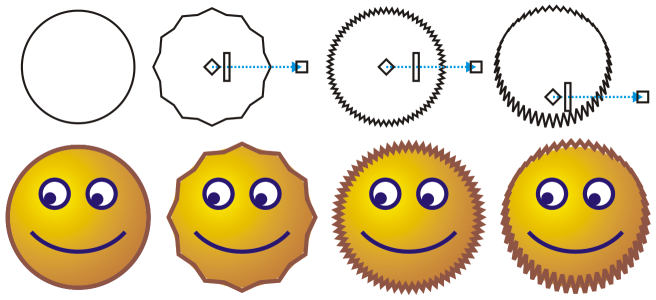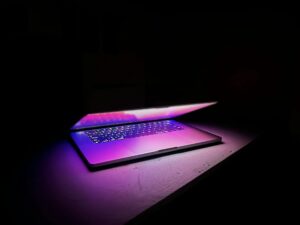Unleashing Creativity: A Comprehensive Guide to Applying Distortion Effects in CorelDRAW

Introduction:
In the dynamic world of graphic design, CorelDRAW stands as a versatile platform, providing designers with an extensive toolkit to breathe life into their creative visions. Among the myriad features that empower designers is the ability to apply distortion effects, a transformative technique that adds dynamism, depth, and artistic flair to digital designs. In this extensive guide, we delve into the nuanced intricacies of applying distortion effects in CorelDRAW, exploring applications, customization options, and advanced techniques that elevate design manipulation to new levels of creativity and expression.
Understanding Distortion Effects in CorelDRAW:
Distortion effects involve the intentional alteration of shapes, objects, or elements within a design to achieve a desired visual impact. CorelDRAW provides designers with a diverse set of distortion tools, enabling the creation of warped, twisted, or liquified effects that add a unique dimension to digital compositions. Whether enhancing illustrations, creating abstract designs, or adding a touch of whimsy to typography, distortion effects serve as a powerful means of artistic expression.
Accessing Distortion Tools:
CorelDRAW seamlessly integrates distortion tools into its interface, offering designers an intuitive means to access and apply these powerful features.
- Distort Tool:
- The Distort tool serves as the primary instrument for applying distortion effects. By selecting the Distort tool, designers can activate interactive handles that allow for the precise adjustment of shapes and objects.
- Interactive Property Bar:
- The Interactive Property Bar, a dynamic toolbar that adapts to the selected tool, provides quick access to distortion options. When the Distort tool is active, designers can find relevant settings on the Interactive Property Bar for efficient adjustments, including distortion styles and intensity.
Distortion Techniques:
Applying distortion effects in CorelDRAW encompasses a range of techniques that cater to diverse design requirements.
- Freeform Distortion:
- Freeform distortion allows designers to manually manipulate nodes and handles to reshape objects organically. This technique provides creative freedom, enabling the creation of unique and unpredictable distortions.
- Preset Distortion Styles:
- CorelDRAW includes preset distortion styles that offer predefined warp effects. Designers can choose from a variety of styles, such as fisheye, wave, twirl, and more, providing a quick and efficient way to apply specific distortions to selected objects.
- Mesh Fill Distortion:
- Mesh fill distortion involves applying a mesh fill to an object and manipulating the nodes within the mesh to achieve complex distortions. This technique is particularly effective for creating intricate and nuanced distortions in illustrations and designs.
Customization Options:
CorelDRAW enhances the distortion process by offering customization options that cater to the specific needs of each design.
- Intensity and Direction Controls:
- Designers can control the intensity and direction of distortion effects, adjusting parameters to achieve the desired level of warp or twist. This customization option allows for fine-tuned adjustments based on design preferences.
- Undo and Redo Functionality:
- The ability to undo and redo distortion actions ensures a non-destructive and iterative design process. Designers can experiment with distortion effects, refining their designs with confidence.
- Distortion Mesh Customization:
- For mesh fill distortion, designers can customize the mesh by adding or removing nodes and adjusting their positions. This level of control allows for precise manipulation, ensuring that distortions align with the overall design vision.
Advanced Techniques and Applications:
Beyond the basics, CorelDRAW empowers designers to explore advanced techniques for applying distortion effects, unlocking new dimensions of creativity and expression.
- Layered Distortions:
- The layered distortion technique involves applying multiple distortion effects to different layers or objects within a design. By combining various distortions, designers can achieve complex and visually captivating results.
- Distortion in Typography:
- Applying distortion effects to typography allows designers to create custom lettering with a unique visual impact. Distorted typography can convey a sense of energy, playfulness, or even a surreal aesthetic, depending on the chosen distortion style.
- Creating Surreal Landscapes:
- Distortion effects are powerful tools for creating surreal landscapes and abstract compositions. Designers can warp and twist elements within a design to evoke dreamlike or otherworldly atmospheres, pushing the boundaries of visual storytelling.
Applications in Various Design Disciplines:
The ability to apply distortion effects in CorelDRAW finds diverse applications across design disciplines, showcasing its adaptability and versatility.
- Digital Illustrations and Artwork:
- In digital illustrations, distortion effects add an element of surprise and creativity. Designers can use distortions to transform ordinary elements into imaginative and visually striking compositions.
- Web and User Interface Design:
- Distortion effects are beneficial in web and user interface design. Designers can apply subtle distortions to icons, buttons, and graphics, introducing a sense of dynamism and engaging visual appeal.
- Print Design and Advertising:
- In print design and advertising, distortion effects can be used to create attention-grabbing visuals. Whether warping product images or distorting background elements, designers can make a lasting impression with unique and memorable designs.
- Packaging and Product Design:
- The ability to apply distortion effects is valuable in packaging and product design. Designers can use distortions to create eye-catching product graphics, adding a touch of innovation to packaging designs.
- Abstract Art and Conceptual Design:
- Distortion effects are key elements in abstract art and conceptual design. Designers can experiment with warp and twist effects to convey emotions, ideas, or abstract concepts, resulting in visually compelling and thought-provoking designs.
Conclusion:
Applying distortion effects in CorelDRAW is a testament to a designer’s ability to infuse creativity and dynamism into their digital designs. Whether working on illustrations, typography, web interfaces, or print materials, designers rely on distortion effects to bring their visions to life with unique and captivating distortions.
As designers continue to explore the extensive capabilities of CorelDRAW’s distortion tools, they unlock new dimensions of creative freedom and expression. Applying distortion effects serves as a dynamic tool for design exploration, allowing for the creation of shapes that challenge conventions and spark visual interest. With the ability to apply distortion effects with confidence, designers navigate the complexities of graphic design, transforming concepts into visually captivating and artistically expressive artworks. CorelDRAW, with its intuitive interface and powerful distortion features, remains an indispensable tool for designers seeking to achieve both creativity and precision in their digital compositions.




